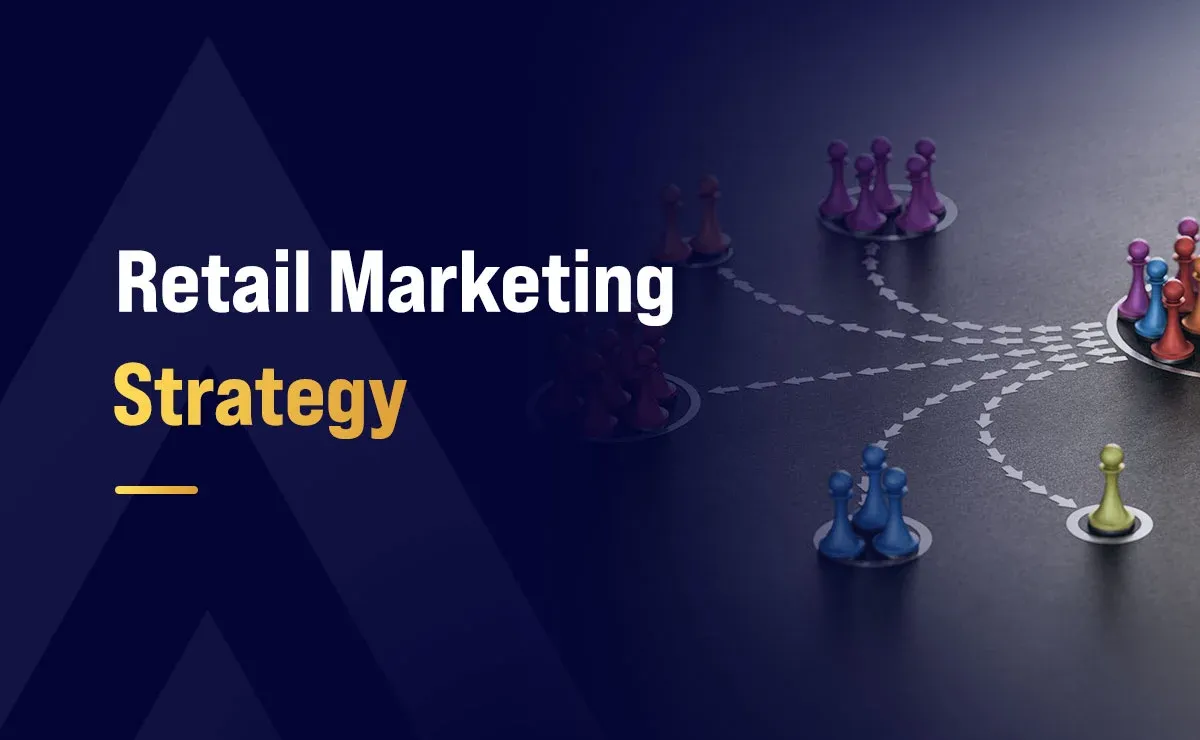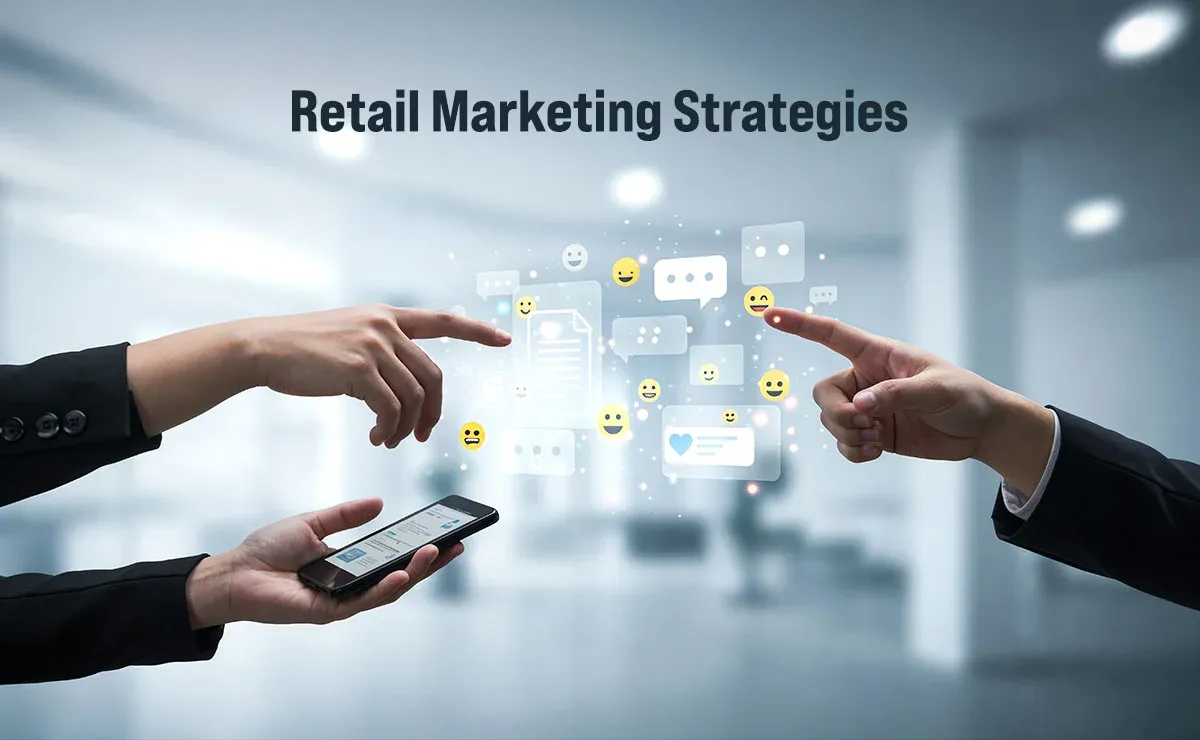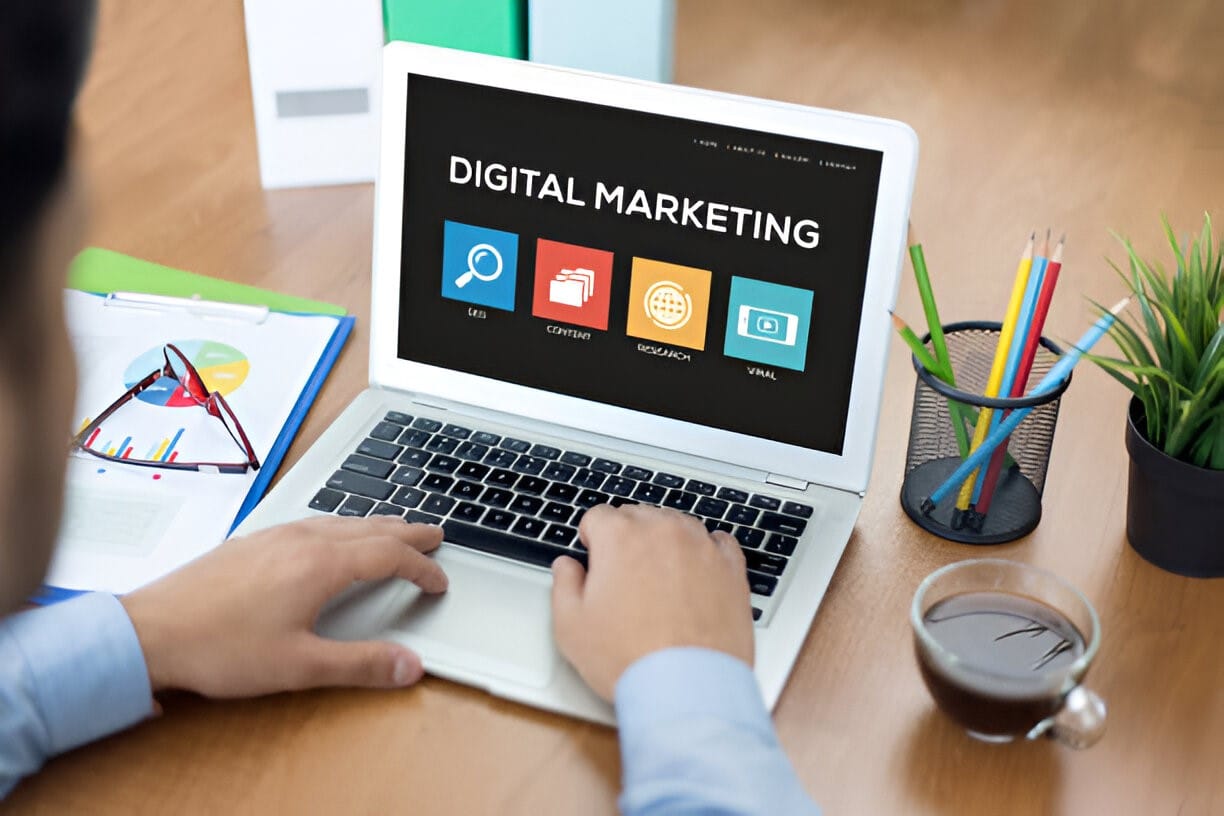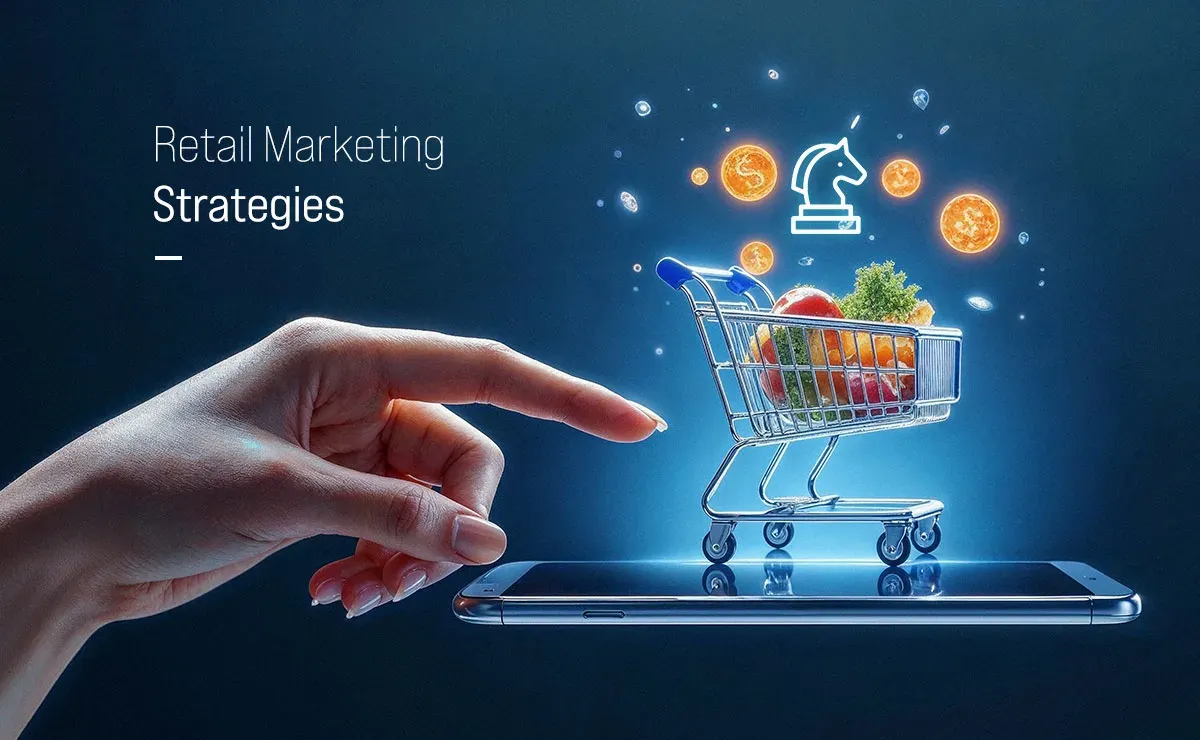What is Retail Marketing Strategy?

Retail is one of the largest industries globally, encompassing countless companies and diverse product markets. In such a competitive space, crafting effective marketing strategies can set a company apart and boost its product sales.
By understanding and leveraging retail marketing strategies, businesses can optimize their campaigns, resonate with target customers, and build lasting brand loyalty. This article will explore what retail marketing strategies entail and highlight key approaches to mastering them.
What are Retail Marketing Strategies?

Retail marketing strategies are carefully designed methods that businesses use to enhance brand and product visibility while improving sales performance. These strategies focus on aspects like pricing, placement, and promotional techniques, ensuring products and services meet customer expectations of cost, convenience, and communication.
The ultimate goal of retail marketing is to establish a trustworthy and recognizable brand image, offering a unique customer experience that differentiates the business from its competitors. Since trends and consumer behaviors constantly evolve, successful companies adapt their strategies to stay relevant in the dynamic retail market.
15 Retail Marketing Strategies
Based on comprehensive analysis of retail marketing approaches, here are 15 retail marketing strategies to enhance your retail marketing campaigns:
Personalization and Customer Understanding
Deep customer insights are the cornerstone of effective retail marketing. Businesses must go beyond demographic data to understand customer preferences, behaviors, and values. Retailers can use insights gathered from customer data to deliver highly personalized experiences tailored to specific preferences across all interaction points.
It involves tracking purchase histories, preferences, and engagement patterns to craft customized offers, recommendations, and communications that resonate with individual customers.
Multichannel and Omnichannel Marketing
Today’s consumers expect a unified experience across online and offline channels, pushing retailers to synchronize marketing efforts spanning social media, email campaigns, mobile applications, websites, and physical stores.
Maintaining consistency in branding, messaging, and customer experience is a key factor for success. This means ensuring that a customer can easily transition from browsing online to purchasing in-store, with a unified and smooth journey.
Mobile-First Strategy
With mobile devices dominating internet access, retailers must optimize their digital presence for mobile platforms. It is essential for retailers to create mobile-optimized websites with quick load times, streamlined checkout systems, and user-friendly navigation.
Mobile-focused strategies should include the use of SMS notifications, dedicated apps, and location-based marketing to connect with customers directly through their smartphones.
Location-Based Marketing
Leveraging geographical data allows retailers to send personalized, timely messages to potential customers near their stores. Geofencing technology can trigger special offers, notifications, and targeted promotions based on a customer's physical location, driving foot traffic and enhancing the in-store experience.
Advanced Loyalty Programs
Modern loyalty programs go beyond simple point accumulation. Successful programs offer personalized rewards, exclusive experiences, and meaningful engagement. Implementing mobile apps with integrated loyalty features, providing tiered rewards, and offering genuine value can significantly enhance customer retention.
Social Proof and User-Generated Content
Prominently displaying customer testimonials, reviews, and other user-generated content builds credibility and fosters trust in the brand. Retailers should actively invite customers to share their experiences, display genuine feedback prominently, and create platforms that facilitate customer storytelling.
Interactive In-Store Experiences
Physical stores must evolve to offer more than just product transactions. Implementing technologies like augmented reality, interactive displays, and immersive product demonstrations can transform shopping from a mundane task to an engaging experience.
Sustainable and Ethical Branding
Increasingly, consumers prioritize brands that showcase their commitment to social responsibility, including ethical sourcing, sustainability, and community impact. This strategy appeals to eco-conscious customers while fostering enduring brand loyalty.
Advanced Customer Support Technologies
Implementing AI-powered chatbots and advanced customer support technologies can provide instant, 24/7 assistance. These solutions are designed to address common queries, share product details, and resolve issues efficiently, thereby boosting customer satisfaction.
Data-Driven Pricing Strategies
Dynamic pricing strategies that respond to market conditions, demand, and competitive landscapes can optimize revenue. Retailers should use advanced analytics to determine optimal pricing that balances profitability with customer perception of value.
Digital Marketing and Social Media Engagement

Retailers must move beyond merely having an online presence by engaging customers actively through social media, crafting engaging content, and collaborating with influencers. A strong digital marketing strategy should integrate SEO, focused social media advertisements, and valuable content marketing to maximize impact.
Comprehensive Digital Product Catalogues
Maintain up-to-date, detailed digital product catalogs that provide comprehensive information. These catalogs should be easily accessible across multiple platforms and offer rich, engaging content that helps customers make informed purchasing decisions.
Strategic Social Media Influencer Partnerships
Partnering with influencers whose values align with your brand can help extend your reach, improve credibility, and foster meaningful relationships with target audiences.
Referral and Word-of-Mouth Marketing
Develop robust referral programs that incentivize customers to recommend your products or services. Offer meaningful rewards that motivate customers to become brand ambassadors.
Continuous Performance Analysis
Regularly assessing marketing performance using relevant metrics allows businesses to fine-tune their strategies, adapt to evolving trends, and improve customer interactions.
Importance of Retail Marketing
Here's why retail marketing is crucial for businesses:
- Attracting and Retaining Customers: Retail marketing creates awareness about a business’s products or services, drawing in potential customers. Through effective strategies like targeted promotions and impactful advertisements, retailers can increase visibility, attract new shoppers, and encourage repeat visits.
- Gaining a Competitive Edge: Retail marketing equips businesses to stand out in a saturated marketplace by creating a distinct identity. Unique branding, exclusive offers, and innovative promotional tactics allow retailers to stand out, creating a distinct competitive advantage over rivals.
- Boosting Sales and Revenue: Retail marketing directly impacts revenue by driving sales. Tactics like in-store promotions, limited-time offers, and targeted advertising influence customer purchase decisions and increase foot traffic, contributing to higher profitability.
- Strengthening Brand Identity: Effective retail marketing reinforces brand image and loyalty. Consistent messaging, exceptional customer experiences, and recognizable branding elements help create a positive perception, ensuring customers remember and trust the brand.
- Understanding Customer Behavior: Analyzing consumer preferences, purchase habits, and market trends helps businesses adjust their strategies to meet changing customer needs and predict future demands.
- Enhancing Customer Experience: A customer-centric approach in retail marketing ensures a seamless and engaging shopping journey. Personalized recommendations, thoughtful in-store layouts, and exclusive rewards elevate the shopping experience, fostering satisfaction and loyalty.
- Building Strong Customer Relationships: Retail marketing focuses on nurturing relationships rather than just creating brand awareness. Focusing on customer retention, repeat business, and long-term loyalty is crucial for achieving sustainable growth.
- Adapting to Dynamic Trends: Retail marketing equips businesses with the tools to stay relevant by adapting to evolving consumer preferences and market trends. Flexibility in marketing strategies ensures businesses remain competitive in a rapidly changing environment.
Types of retail marketing
Retail marketing strategies encompass diverse approaches, each tailored to meet specific business goals and customer needs. Here’s an overview of the primary types of retail marketing and their unique characteristics:

Offline Retail Marketing
This traditional marketing method relies on physical media and in-person interaction to promote products and services. It’s especially effective for local businesses and brick-and-mortar stores.
Key offline strategies include:
- Print Advertising: Flyers, brochures, and magazines reach wide audiences with targeted messages.
- Billboards and Posters: Eye-catching visuals in strategic locations capture attention and enhance brand awareness.
- Television and Radio Ads: Engaging audio-visual content allows businesses to communicate creatively with local or regional audiences.
Digital Retail Marketing
Digital marketing promotes products and services through online channels, offering greater reach and precise targeting. This approach is cost-effective, measurable, highly adaptable, and indispensable for retailers operating primarily online.
Popular online marketing techniques include:
- Social Media Marketing: Platforms like TikTok, Instagram, and Facebook enable businesses to connect with customers via engaging posts, targeted ads, and influencer collaborations.
- Email Marketing: Personalized newsletters and promotional emails nurture customer relationships while driving repeat sales.
- Search Engine Optimization (SEO): Enhancing website content for search engines increases online visibility and attracts organic visitors.
- Pay-Per-Click Advertising (PPC): Paid online ads drive immediate traffic to websites, especially during sales or special events.
- SMS Marketing: Delivering promotional content directly to customers’ mobile devices ensures timely and efficient engagement.
Omnichannel Retail Marketing
Omnichannel marketing integrates offline and online strategies, ensuring customers have a seamless shopping experience across various touchpoints.
Benefits of omnichannel marketing include:
- Consistent Branding: Maintaining uniform messaging across all platforms enhances trust and strengthens brand recognition.
- Personalized Experiences: By leveraging data insights, retailers can create tailored interactions, which enhance customer satisfaction and boost conversion rates.
- Cross-Channel Engagement: Customers can move seamlessly between online and offline platforms, such as browsing online and purchasing in-store.
The Six Ps of Retail Marketing Mix
The retail marketing mix is a comprehensive framework that helps businesses structure their strategies to effectively attract and retain customers. While traditional marketing focuses on the "Four Ps" (Product, Price, Place, and Promotion), the retail sector expands this to include two additional factors: People and Presentation. Here’s an overview of each element:
Product
The product lies at the heart of any retail business. Offering the right mix of products tailored to customer preferences is critical.
- Diversity: A retailer must ensure a well-balanced assortment of products, ranging from bestsellers to niche items.
- Quality and Innovation: Providing premium, innovative, or one-of-a-kind products improves customer loyalty and overall satisfaction.
- Relevance: Retailers must frequently reassess their product range to meet shifting consumer needs and current market trends.
Price
Strategic pricing influences how customers perceive products and impacts their purchasing decisions.
- Competitive Pricing: Retailers must ensure their prices are competitive while maintaining profitability.
- Dynamic Pricing Strategies: Discounts, seasonal sales, and value-based pricing can help attract price-sensitive shoppers.
- Perceived Value: Pricing should reflect the product’s value in the eyes of the customer and strengthen the brand’s image.
Place
The concept of "place" involves the physical or digital channels through which products are offered to customers.
- Convenience: A store’s physical location should be easily accessible, whether in busy commercial areas or online platforms.
- Channel Integration: Retailers can adopt omnichannel approaches, offering customers the flexibility to shop in-store, online, or through mobile apps.
- Inventory Availability: Ensuring the right products are stocked at the right locations prevents missed sales opportunities.
Promotion
Promotion encompasses all marketing efforts to create awareness, drive traffic, and boost sales.
- Advertising: Both traditional methods (TV, radio) and digital marketing (social media, SEO) help retailers reach their audience.
- Sales Promotions: Limited-time discounts, loyalty programs, and referral campaigns encourage customer engagement.
- Content Marketing: Engaging resources like blogs and videos help to establish brand awareness and strengthen industry authority.
People
In retail, both employees and customers play pivotal roles in shaping the overall shopping journey.
- Customer Service: Employees should be trained to provide exceptional service, offering personalized recommendations and resolving issues promptly.
- Engagement: Building relationships with customers through friendly interactions and loyalty programs fosters long-term patronage.
- Employee Empowerment: Motivated and knowledgeable employees create a positive shopping environment that reflects the brand’s values.
Presentation
Presentation focuses on how products and the retail space are showcased to entice customers and improve their shopping experience.
- Store Layout: A visually appealing and thoughtfully arranged store layout simplifies the shopping process and enhances customer enjoyment.
- Merchandising: Attractive product displays, effective use of color, and strategic placement encourage impulse purchases.
- Brand Aesthetics: Online and offline spaces should align with the brand’s identity, ensuring consistency and professionalism.
Summing Up
Retail marketing is the backbone of a successful business in an ever-evolving industry. By implementing the right strategies—from personalization and omnichannel integration to leveraging data-driven insights and modern technologies—retailers can attract, engage, and retain customers effectively.
Ultimately, success in retail marketing lies in understanding your audience, staying agile in response to shifting trends, and delivering exceptional value and experiences. By mastering these elements, businesses can carve out a competitive edge, foster lasting brand loyalty, and achieve sustainable growth in a dynamic marketplace.





